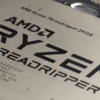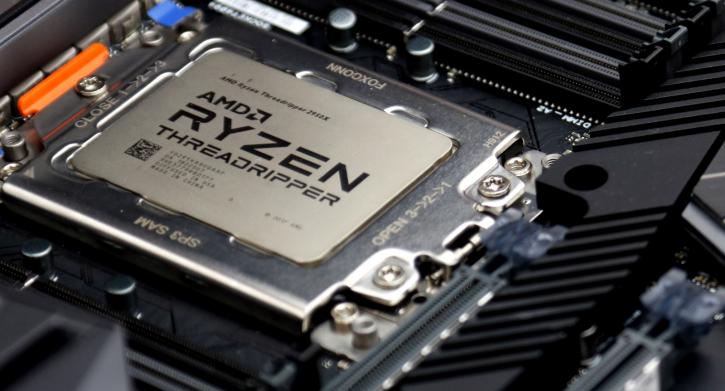Conclusion
Final Words
You know, I like the 2950X over the 2990WX. That 32-core part requires serious workloads and the software to support it. Anything with 8 up-to 16 cores are plenty sufficient of course and, with the 2950X, AMD manages to boost four threads to 4.4 GHz as well. That makes this a very feisty processor, which I should say is a hundred bucks cheaper compared to the first gen 1950X model.
Pinnacle Ridge (ZEN+) brought Threadripper what they needed, better yields on 12nm offered them the ability to lower voltage a bit, thus increasing the clock frequency. The conundrum of it all is simple, I did not expect a 32-core part but they did release it. More viable for the majority of us is the 16-core unit as tested today though. As you have been able to see, you can game perfectly fine with the 2950X, however, I will say it, this is not a gaming processor whatsoever, it's not intended to be that. I mean, games require 4 to 6 highly clocked cores so the reality is that you will not need a 12, 16, 24 or the beastly 32-core processor for your gaming needs. Really, get yourself a nice Ryzen 6 or 8-core processor and please do save yourself a lot of money. However, for the ones who need to perform the occasional video editing, or developers that need to virtualize multiple containers, well that's where this is a golden CPU as it offers a great balance of both worlds (gaming / pro workloads).
Never, ever has any consumer been able to purchase a 12, 16, 24 or let alone a 32-core processor in this price range as that was exclusive to a very expensive server market. Thank you, AMD. That said, for the guys and girls that have pro-workstations and do a lot of video editing, this stuff right here is pure gold. I recommend a 16-core 2950X over that 32-core 2990WX as it just makes more sense with the current state of software and amount of threading it can do. For content creation, virtualization, animation, video editing, modeling and raytraced rendering the answer is 2990WX. For the extreme ones that game, stream, edit, browse and do it all at once, this would be the 2950X.
Performance
If the software supports 32 threads, there's nothing stopping this processor ripping threads and spitting out serious numbers. The base clock is nice and, if all threads are used, you'll see something like 3.8~3.9 GHz on all cores. With a few threads, that's a staggering 4.4 GHz under the condition that you properly cool the processor. You can tweak all cores to 4.1~4.2 GHz of course, but remember that will increase power consumption severely, but also doesn't bring in heaps of extra performance. Only with many threads, you'll see a gain, with fewer threads that XFR2 enabled 4.4. Ghz on four bins brings in the better advantage.
I mentioned this in the 2990WX article and will do so again; Windows does need further optimization, as that single fastest thread will not always run that 4.4 GHz Turbo. AMD is working with Microsoft to improve on this. Last year I felt that we all need to move to 6 and 8-core processors as these simply offer a snappier and faster PC ecosystem with all the things we do simultaneously on a PC these days, so 32 cores... I do not know how to explain a need for that logically. 16 cores, however, I am comfortable with as AMD offers a good symbiosis of pro workload performance versus gaming. But if it's just about gaming for you, then Threadripper is not what you should be looking at.
The Experience
I am also happy to report that, with the launch BIOS and motherboard, we really did not run into any significant enough issues. The memory compatibility and stability was truly good. If you pick your memory right, you will not have any issues as the initial Ryzen releases have already removed the launch issues. In the BIOS simply enable the XMP SPD profile and you'll boot straight into Windows with your new timings and frequency. Current memories that work on Gen2 Ryzen will work just as well on Threadripper.
Gaming
Game performance then; honestly it's good, but not excellent looking at that low-resolution performance bracket. However, if you can live with a 5 to 10% margin in FPS compared to the fastest competing and highly-clocked procs, then you're good to go.
Opposed to the 2990WX, Game mode does not bring in heaps of extra performance. The 2950X has fast 4.4 GHz turbo bins and, since most games run 4 to 6 threads these days, you're there. So gaming mode with local memory distribution enabled, well, it could help you here and there a bit, but IMHO it was not worth the effort as the 2950X at default is more than capable all by itself. For the 2990WX however, that is another story.
The Memory
We mentioned DDR4 memory a couple of times already; the latest AGESA based BIOSes have improved a lot in the past year. Threadripper fully supports 3200, even 3466 MHz, the same stuff we've been recommending for a year now. 3200 MHz is a non-issue with the right memory, we recommend 2933 MHz or better if you plan to do some gaming. Obviously, with quad-channel, you could go a little slower as you gain more bandwidth. Please do check your motherboard QVL list for recommended memory. If you do not need ECC memory, we can recommend the G.Skill FlareX memory as used, we never have any issues with it. Pop it in, enable XMP and you're up and running. Whether you like to use it in local or distributed mode, i'll leave up to you.
The Power
With this processor now fabbed at 12 nm FinFET+ the TDP sticks to roughly 180 Watts. A full PC at idle will sit in the 95 Watt range with a dedicated graphics card installed (GeForce GTX 1080 / 16 GB memory / SSD and the motherboard). When we stressed the processor with a Prime 1024M run we reached roughly 265 Watts, that's low enough for what it needs to be. Overall though, this is impressive to see with sixteen CPU cores.
The Tweak
You have seen my overclocking results, as I included them on all tests, 4100~4200 MHz on all 16 cores with just an LCS cooler was accomplished in mere seconds of BIOS tweaking. However, the XFR2 functionality is so refined that at defaults the four 4.4 GHz bins make this the faster option overall for today's software. Yeah, that Turbo to 4.4 GHz is lovely, however the second you use more than 4 threads, it'll start to throttle down towards that base clock in gradual linear steps. The good thing is that if you cool this processor down well enough with, say, the LCS kit we used today, your base clock will still hover in the 3.8~3.9 GHz range thanks to XFR2. And that as well remains impressive for something with sixteen cores.
Manually I achieved 4200 MHz on all cores, but you will be in the 1.40~1.45 volt range. Be advised though, tweaking creates more heat and thus make sure you have enough cooling. We surely recommend some form of liquid cooling. Obviously, tweaking will increase your power consumption (when the PC is stressed), please do keep that in mind at all times.
The conclusion
I've stated it many times, if you are a high-end PC end-user that likes to play games then this stuff is not for you. Threadripper was not intended to be a gaming processor, it's all about heavily threaded and complex workloads. Thing is though, am I at the point where I could recommend this as a gaming rig? The four 4.4 GHz bins that the 2950X offers give this Threadripper plenty of oomph to stand its ground in gaming. Will it be the fastest gaming processor? Nope... but you can do so quite well. Would you need 16 cores / 32 threads? Honestly, I doubt it, but I can surely understand developers and content creators having an urge, a need for more cores as compiling that workload or rendering that video can really benefit from the 32 threads. So it's not a clear cut answer that I can give you. You would be future proof though, I mean I know people that are still on the very first 6-core (Gulftown) procs from Intel and they still love it (it's time to upgrade though, my man). And within that point of view there is good reasoning for a sixteen-core part. It'll last you forever and we all know that many cores/threaded applications are the future, as the reach for the eternal highest GHz slowly is coming to an end. Will we ever pass 5 GHz by a good amount at ergonomic and economic metrics in power consumption?
Yeah, it is difficult to find logical reasoning for the Threadripper series, as AMD went so loud and fast in merely one year. 16 cores / 32 threads, 4.4 GHz Boost and a 3.5 GHz base clock is what you need to be able to hyper-task, stream, game, render 3D content and make videos. This proc will be the new sweet spot for the PC HEDT lineup from AMD. Combined with X399 the sky is the limit and your connectivity virtuous. The price is 899 USD, that's 56 bucks per core. Yes, a lot, seriously a lot of money for a consumer based processor. But the per core price is pretty sweet value man. Whether or not this is a viable option for you, hey I don't know. I do know that a rig based on what we tested today is going to last you so many years. And with software slowly getting more and more threaded, it might even be a wise investment in some cases. That said, purely for gaming and everyday usage this investment really doesn't make much sense, we can all agree on that, right? Whatever your choice is, you'll love your Threadripper PC, whether that is 12, 16, 24 or 32 cores. But for the demographic of this website, the 2590X somehow makes sense, as it could be the best match in application compatibility and gaming. AMD continuously manages to ooze out products that impress, even while there's no real need for them we do have to say kudos as this is brilliant stuff. Yeah, for those that need that x-factor in their PC, this might be a great opportunity. It is a unique product and, out of reach for the 90% of us, this as well is a top pick.
- Sign up to receive a notice when we publish a new article
- Or go back to Guru3D's front page.
“A mind needs books as a sword needs a whetstone if it is to keep its edge.”



